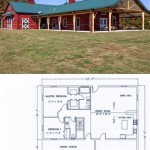Why Is It Called Plantar Flexion?
Plantar flexion is a movement of the foot that points the toes downward. It is a fundamental movement that is essential for walking, running, and many other activities. This article explores why this movement is called plantar flexion. We will delve into the anatomical basis of this motion, its significance, and its role in human movement.
Understanding the Anatomy of the Foot
The foot is a complex structure composed of 26 bones, 33 joints, and over 100 muscles, tendons, and ligaments. The intricate arrangement of these components allows for a wide range of movements, including plantar flexion.
The term "plantar" refers to the sole of the foot. When the muscles in the back of the calf contract, they pull the heel downwards and draw the toes towards the ground. This action flexes the foot, bringing the sole of the foot closer to the posterior aspect of the leg, a movement aptly named plantar flexion.
The Role of Muscles in Plantar Flexion
Plantar flexion is primarily controlled by the muscles in the posterior compartment of the calf, specifically the gastrocnemius and soleus muscles. These muscles are connected to the heel bone (calcaneus) via the Achilles tendon. When these muscles contract, they pull on the Achilles tendon, causing the ankle to flex and the foot to point downwards. The gastrocnemius muscle has two heads that originate on the femur (thigh bone) and inserts into the Achilles tendon. This muscle plays a crucial role in both plantar flexion and knee flexion. On the other hand, the soleus muscle originates on the fibula and tibia (lower leg bones) and inserts into the Achilles tendon. It primarily functions in plantar flexion.
Clinical Significance of Plantar Flexion
Plantar flexion is a fundamental movement essential for various activities, including:
- Walking and Running: Plantar flexion propels the body forward during walking and running as it lifts the heel off the ground and prepares for the next step.
- Jumping and Leaping: Plantar flexion is crucial for generating power for jumping and leaping movements. The strong contraction of the calf muscles provides the necessary force to propel the body upward.
- Balance and Stability: Plantar flexion helps maintain balance and stability during activities like standing and walking by keeping the foot firmly planted on the ground.
Beyond its role in everyday activities, plantar flexion also plays a significant role in sports and physical performance. Athletes in various disciplines, such as basketball, tennis, and track and field, rely on strong plantar flexors to improve performance and reduce the risk of injuries.
Understanding the mechanism and clinical significance of plantar flexion is essential for healthcare professionals and athletes alike. It allows for a better understanding of foot and ankle biomechanics, aiding in the diagnosis and treatment of various conditions affecting the lower limb.

Why Is Ankle Extension Called Plantar Flexion Homework Study Com

Plantar Flexion Meaning Origin Dictionary Com
What Is Plantar Flexion And Dorsal How Do They Differ Quora

Why Is Ankle Extension Called Plantar Flexion Homework Study Com

Ankle Range Of Motion And Injuries Correct Footwear Fitting

Plantar Flexion The Definitive Guide Biology Dictionary

Plantar Flexion The Definitive Guide Biology Dictionary

Ankle Dorsi Flexion And Planter

Plantar Flexion What Is It Which Muscles Plantarflex The Ankle

Plantar Flexion The Definitive Guide Biology Dictionary
Related Posts








